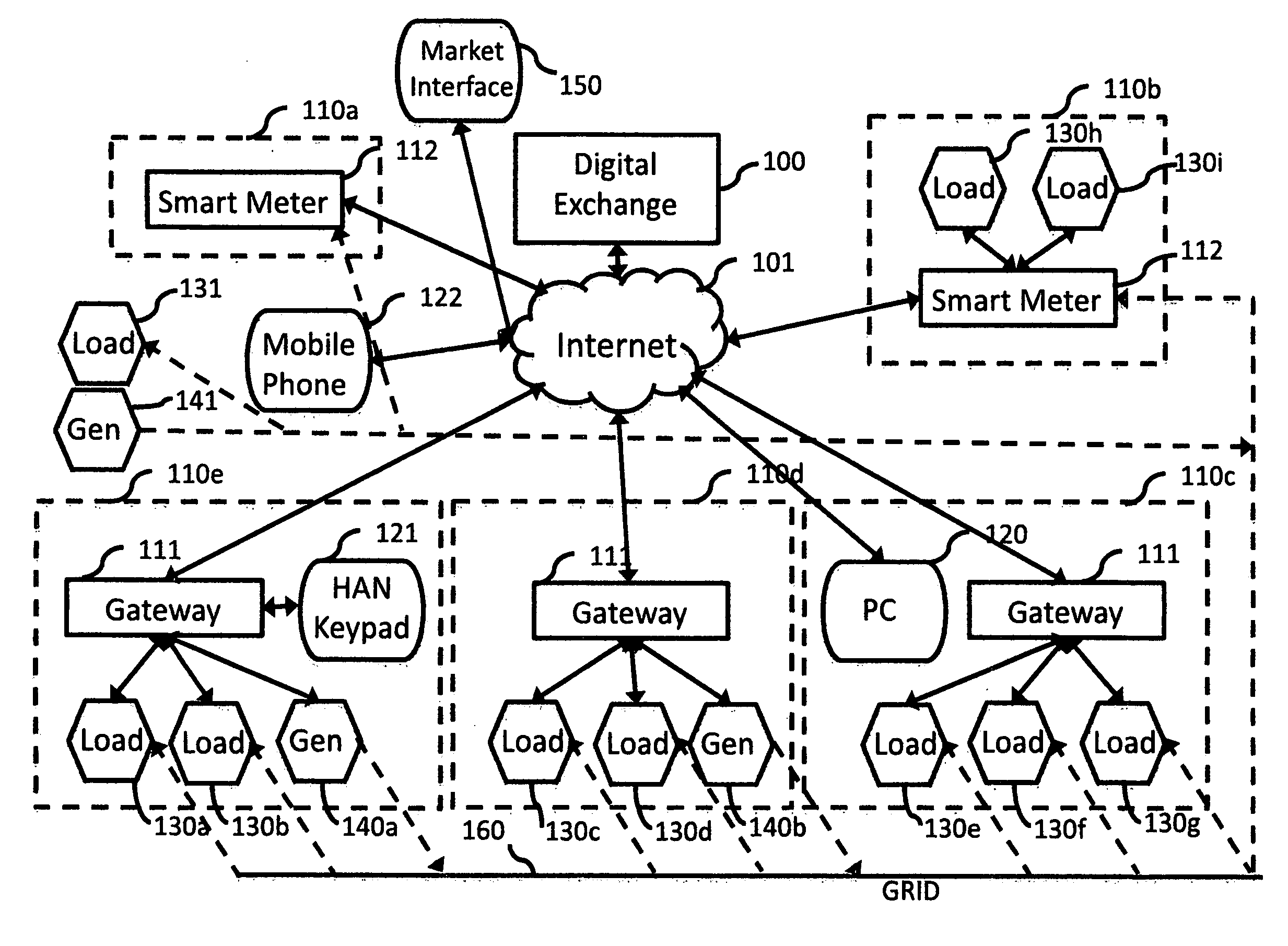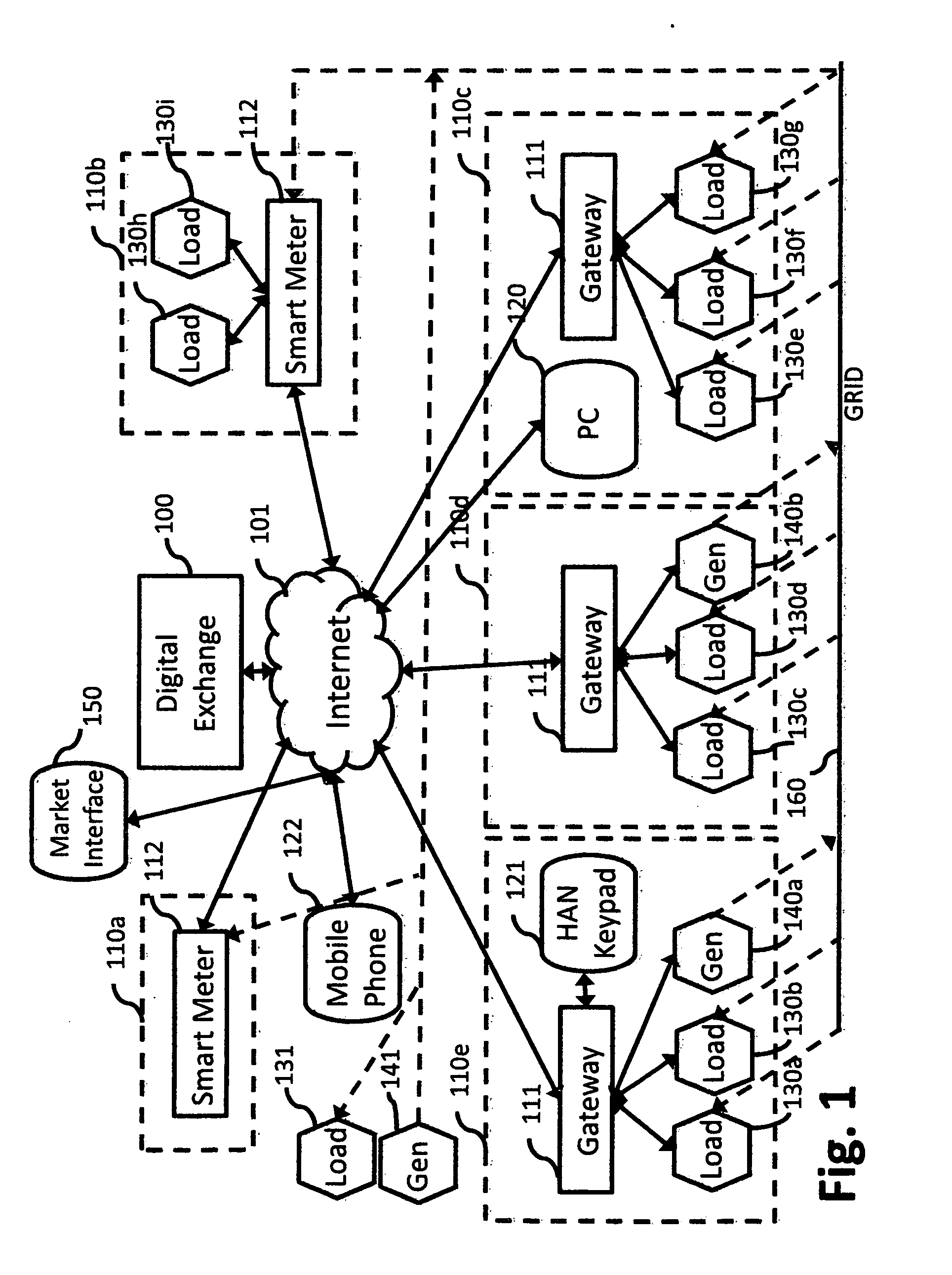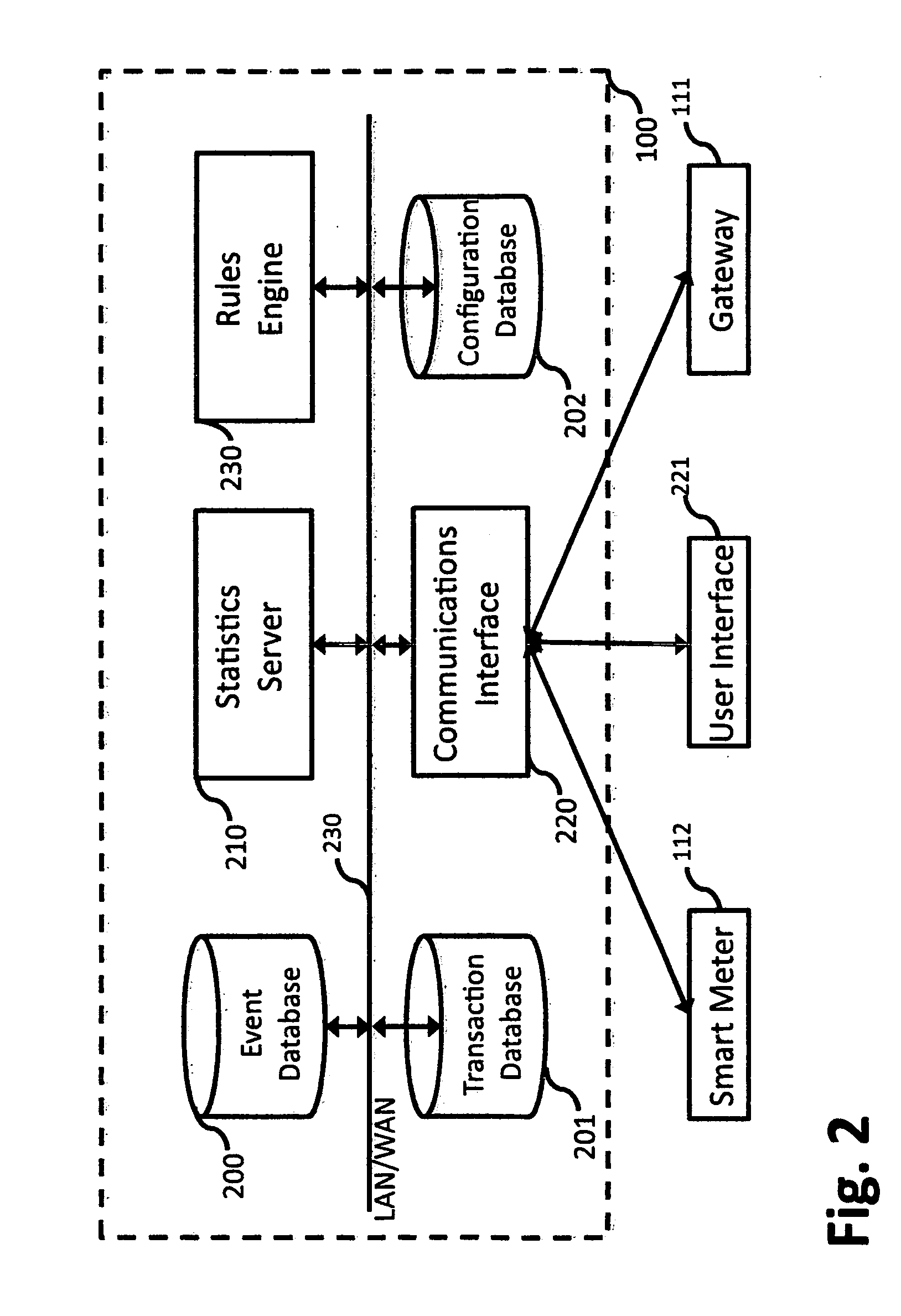While a robust
electric power grid is widely recognized as a vital infrastructure component of a developed economy, technological progress in the field of
electricity grid systems has not kept up with the pace of other important technological fields such as
telecommunications.
Additionally, the current regulatory scheme in the United States discourages large-scale investment in transmission and distribution infrastructure, with the unfortunate result that the grid is often running near capacity.
A number of techniques have been devised to assist in maintaining grid stability during times of
high stress, which normally means peak usage hours but also includes periods during normal usage when part of the grid goes offline, thus reducing the
effective capacity of the grid or a region of it.
A problem with the current state of the art in demand reduction is that it is only practical, in the art, to incorporate very large users in demand reduction programs.
Unfortunately, a large portion (roughly 33%) of the electric power used during peak periods goes to small users, who do not normally participate in demand management.
These users often are unaware of their energy usage habits, and they rarely pay for
electricity at varying rates.
Partly this is due to the fact that the large majority of small businesses and homes do not have “smart meters”; the amount of power used by these consumers of electricity is measured only once per month and thus there is no way to charge an interval price (typically pricing is set at intervals of 15 minutes when interval pricing is in effect) that varies based on
market conditions.
Furthermore, the loads in the homes and businesses of small electricity users are invisible to the utilities; it is generally not possible for utilities to “see”, much less to control, loads in homes and small businesses.
It is a
disadvantage of the techniques known in the art that the consumers and small businesses are not, in general, provided with any substantial financial incentives to participate in demand reduction programs (other than merely by saving because they use less power).
This method similarly discourages
consumer participation, because the majority of the financial rewards associated with the
demand response are not generally passed along to the
consumer.
The companies that aggregate demand typically charge utilities for the peak reduction, but the
consumer is unable to sell their available “negawatts” directly to a utility.
This is problematic because this methodology reduces consumer incentives to participate in
demand side management, which is a necessary component of modern
grid management.
And adoption is hampered by the general lack of willingness on the part of consumers to allow utilities to control significant portions of their electricity usage with the consumer having little “say” in the matter.
And, from the utilities' point of view, the large variations in consumer usage patterns means that it is much harder for utilities to gage how much demand reduction is enough, in advance; compared to large, stable users such as large office buildings or industrial facilities, utilities face a complex mix of user patterns that are difficult to predict and virtually impossible to control.
Another problem in the art today is the incorporation of
distributed generation and storage systems, which are proliferating, into grid demand management systems.
In many cases, consumers are unable to do more than to offset their own electric bills with generation units (such as microturbines powered by wind, or solar panels on a roof, or plug-in electric
hybrid vehicles that could add energy to the grid when needed), because utilities have neither the means nor the motivation to pay them for the extra electricity they generate.
Many states require utilities to buy excess power generated; but, without an ability to sell that generated power at a price that represents a more holistic view of its value that includes “embedded benefits” (i.e. at a rate that may consider, but is not limited to, the effect on enhancing local
power quality, proximity to loads, type of power generated and the associated reduction in carbon and other negative externalities—like
sulfur dioxide and
nitrogen dioxide—and the reduced capital costs resulting from the reduction of required capital investments in infrastructure), most
distributed power generation remains economically unfeasible, to the detriment of all parties.
Additionally, while storage units may allow users to avoid peak charges and to even the flow of locally generated power (for instance, by storing
wind power during high wind conditions and returning it when the wind conditions are low), it is generally not possible for users to sell stored power to the
grid operator at its true value for the same reasons.
An additional challenge associated with integrating distribute
energy resources with the grid is the lack of a cost-effective means of aggregating
distributed power generation into a form that can be traded in a manner similar to the large blocks of power that are bought and sold by more traditional commercial power plants like
coal and nuclear.
Complex industry rules discourage participation and even consolidators have been hesitant to enter the market given the high set up costs associated with communications,
staffing, and industry monitoring.
 Login to View More
Login to View More  Login to View More
Login to View More 


